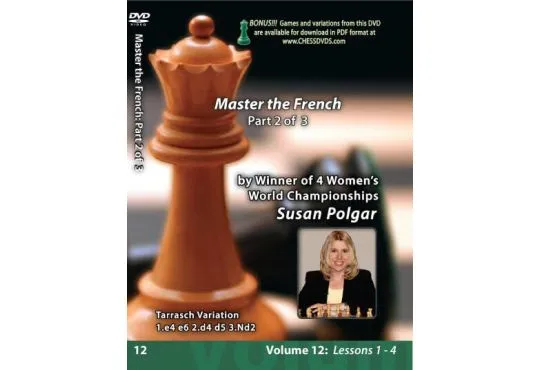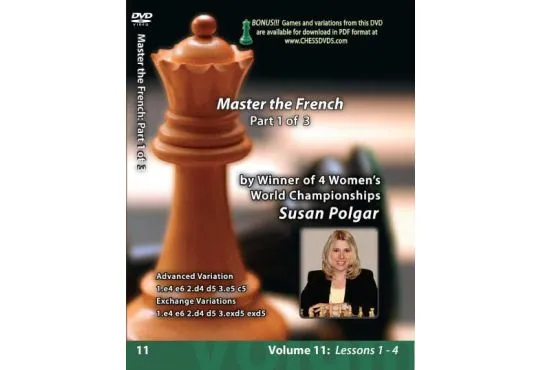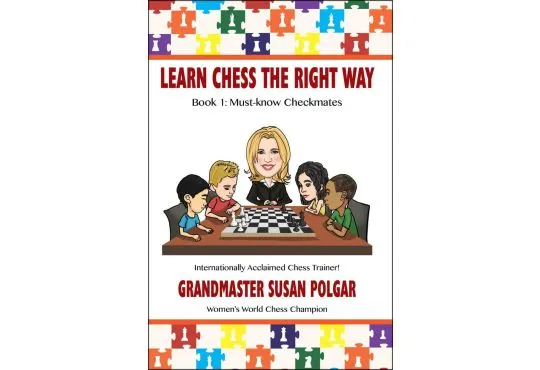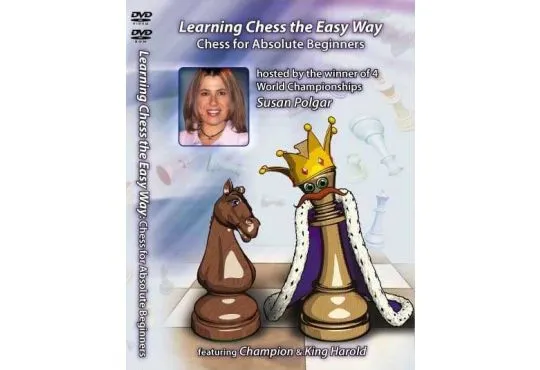The Polgar Sister: Three Chess Prodigies In One Family
Have you heard the saying “Geniuses are made, not born”? Well, it seems the Polgar sisters have brought that quote to life.
While going through their story, we couldn’t help but think that their path may have been a bit extreme. But, as you will see, the end result speaks for itself.
The Polgar sisters are redefining the game for women chess enthusiasts, so let's take a look at how this started.
This article takes a closer peek into the lives of the Polgar sisters, the “experiment,” and whether it was a success.

Who Are The Polgar Sisters?
László Polgar, a Hungarian chess teacher and psychologist, had a wild idea. He believes geniuses are made, not born.
He wanted that for his children.
His family consisted of his three daughters, who would turn out to be chess prodigies. But they weren’t born prodigies.
The Polgar sisters are unlike any other chess-playing family in the world, and we just find their story one of the most interesting ones out there.
The three sisters, Susan, Sofia, and Judit, were homeschooled by their father with a focus on chess from a young age.
Can you imagine growing up with chess as your main subject in school?
László Polgar went against the Hungarian Chess Federation, which only allowed girls to compete in female-only tournaments. He trained them to take on the best players in the world.
-
 The Great Games of Judit Polgar - 2 DVD's - Chess Lecture - Volume 31 by IM John-Paul Wallace$39.95
The Great Games of Judit Polgar - 2 DVD's - Chess Lecture - Volume 31 by IM John-Paul Wallace$39.95
But, you know, the Polgar family story is more than chess — their family survived the horrors of WWII.
During the Holocaust, the Nazis murdered several members of their family, and their grandmother was a survivor of Auschwitz.
We can only imagine the strength it took to come out of that tragedy and raise a family. If she hadn’t survived, the world would have never met the brilliance of the Polgar sisters.
The siblings didn’t just make chess history – they’re living proof of determination, hard work, and resilience.
Now, we were so curious as to just how László Polgar molded these women into chess prodigies. So, we took a closer look at his experiment.
What Was László Polgar’s Educational Experiment?
László said, “A genius is not born, but is educated and trained,” in an interview with The Washington Post, which was bold and pretty radical.
He didn’t believe that talent was something you’re born with; rather, it was all about practice and education. László was convinced that his kids had way more potential than society gave them credit for.
He became frustrated because most people didn’t buy into his ideology.
As you may have guessed, people believed greatness was something only a few lucky people could achieve. It undoubtedly made him feel alone, but you know what he decided to do?
He decided to prove everyone wrong by turning his own kids into examples.
After Susan, his first daughter, was born, Polgar knew that chess would be the perfect field to test his theory.
Now, you might think, why chess?
Because in chess, results are measured by rankings and ratings, no one could argue whether his daughters were chess prodigies. He knew and believed that if he could transform them into master chess players, it would show that anyone could become a genius with the right approach and technique.
His wife helped him with his experiment, and they turned their Budapest apartment into a full-on chess training center. They filled their walls with chess books, game records, and a system for tracking chess champions like Bobby Fischer.
Soon, he taught them everything about chess, along with regular subjects and even multiple languages!
Chess, however, always came first.
It wasn’t just a lucky guess from Polgar, either. He studied biographies of over 400 intellectuals and found that early, intense focus in one area led to the creation of prodigies.
He was determined and had a simple but clear theory: with the right environment, any child could achieve greatness.
A Deeper Dive into Each Polgar Sister
Now that we have covered just who the Polgar Sisters are and what László Polgar’s experiment is let’s see whether the experiment was a success.
Susan Polgar
Naturally, we have to start with Susan Polgar, the eldest of the three siblings and the trailblazer of the family. By the time she was 15, Susan had rocked the chess world by becoming the first woman to qualify for the Men’s World Chess Championship.

We can only imagine what the headlines read, especially when women were only supposed to challenge other women, not men.
And if that wasn’t enough, she later earned the prestigious title of Grandmaster and won four Women’s World Chess Championships.
Here’s what’s even more impressive: she competed against men. She was breaking down gender barriers in the chess world.
What we love about Susan is that she is not just playing chess; she is a chess ambassador now, running the SPICE Institute and helping young players grow.
That’s not all! She’s training teams, writing books, and organizing tournaments, all while winning an impressive 11 Olympiad medals. She isn’t just a chess champion — she has changed the world of chess education and proved that women could compete at the highest levels of the game.
-
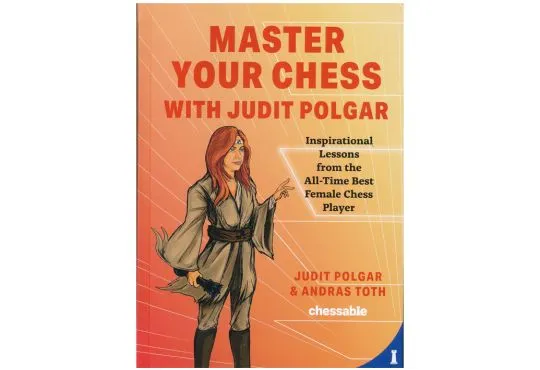 Master Your Chess with Judit Polgar Inspirational Lessons from the All-Time Best Female Chess Player$39.95
Master Your Chess with Judit Polgar Inspirational Lessons from the All-Time Best Female Chess Player$39.95
Sofia Polgar
The middle child, Sofia Polgar, was a bit of a wildcard. While she didn’t have a long chess career as her siblings, Sofia had her moment in the spotlight, and boy, was it big.

She pulled off one of the most legendary performances in chess history at the “Sack of Rome” tournament. Can you imagine a 14-year-old Sofia going up against strong grandmasters and she scored a massive 8.5 out of 9.
Her performance is iconic and a great display, and she is famous for her aggressive and creative playing style.
Sofia didn’t just play by the books — she took risks, making her games even more thrilling to watch.
She earned the title of International Master and helped put her family name on the map. Even though she didn’t pursue chess as intensely as her other sisters, her boldness on the chess board has left a lasting impression.
Judit Polgar
Now, we need to talk about Judit Polgar, and this Polgar sister is in another league.

Did you know that she is the strongest female chess player of all time? Can you imagine just how incredible and massive of a statement that is?
Judit didn’t just become a Grandmaster at the age of 15— she destroyed Bobby Fischer’s record by being the youngest ever to achieve that title.
And she didn’t stop there!
She consistently ranked among the top players in the world, reaching as high as #8, something no other woman in chess has ever done.
-
 E-DVD The Great Games of Judit Polgar - 2 DVD's - Chess Lecture - Volume 31 by IM John-Paul Wallace$39.95
E-DVD The Great Games of Judit Polgar - 2 DVD's - Chess Lecture - Volume 31 by IM John-Paul Wallace$39.95
She challenged the best of the best in the chess world — Viswanathan Anand, Garry Kasparov, and Anatoly Karpov — and she won!
She is a true testament to her father’s experiment, and she wasn’t just breaking gender stereotypes; she was redefining them.
Judit Polgar played in open competitions, took on the toughest male players, and proved, again and again, that gender has nothing on skill and determination. Her aggressive style, quick thinking, and ability to outsmart chess legends make her a powerful figure in the chess world.
She is one of the greatest chess players of all time.
Final Thoughts
In the end, László Polgar was right — geniuses are not born but made, and his daughters are living proof of his hard work and beliefs.
The Polgar sisters have achieved astronomical success through their hard work, sharp skills, and intelligence. We cannot help but admire their impressive records and what they have achieved, not just for themselves but for other women interested in chess.
FAQs: The Polgar Sisters
The Judit Polgar method is aimed at elementary school kids with the intent of developing basic skills and understanding of chess. It focuses on teaching the logic behind chess moves and developing logical and analytical thinking.
The chess child prodigy experiment by László Polgar theorizes that any child can become a genius in a chosen field with early training. He did the same with his three daughters, who went on to become chess prodigies.
Laszlo Polgar was an educational psychologist and chess teacher. he theorized that genius can be taught and not an act of nature. judging by the results of his three daughter he was right to a large degree.





